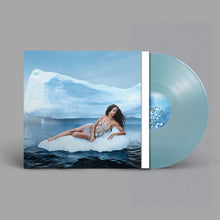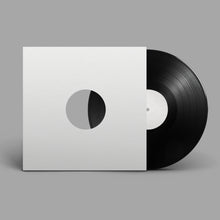TSHA's new album ‘Sad Girl’ — due for release on September 27th on Ninja Tune — contains her most danceable work to date. As shown on recent summer single “Sweet Devotion” with Caroline Byrne, the first track she’s been confidently able to slot between the New York and Chicago house and techno grooves of her acclaimed DJ sets.
It’s a trend that continues with the release of new single “Girls” a proper club anthem “for the girls and gays” to soundtrack messy nights, buoyed up by electro production and an earworm hook sung by Rose Gray: “it’s my body it’s my mind”.
‘Sad Girl’ sees TSHA welcome a new era, one where she’s putting her own vocal stamp on tracks and approaching the genres she’s always wanted to, rather than seeking approval from her peers. Beyond showcasing just the euphoric or melancholy sides of her character, TSHA puts it all on display. It’s a body of work that shows it’s OK to be sad, and you can even revel in it – you can’t have the highs without the lows, after all.
It’s the second full-length from the fast-rising UK star, and follows 2022’s debut album, Capricorn Sun, which was built on bright, melodic house foundations, bringing in UK garage and rave sensibilities. The record was named Album of the Year by DJ Mag and BBC R1 Dance, while Music Tech mag made TSHA their Producer of the Year – which meant a lot, as a female producer whose production skills were often overlooked. The unifying thread in TSHA’s music is in her ability to convey emotions – take, for example, the heart-tugging ‘Sister’, which came about during the 2020 lockdown after she discovered she had a half-sister.
While it finds joy in hedonism and escapism, ‘Sad Girl’ is also an album that addresses difficult feelings. Interlude “Lonely Girl” channels her isolated childhood in the predominantly white town of Fareham, near Portsmouth, crafting Secret Garden-esque fairy tales in her head. “Green” was written after an argument with her partner, where she candidly sings (the album sees her debut her vocals for the first time) about toxic positivity. TSHA might radiate confidence, grinning ear to ear, in DJing videos posted on social media, but she’s also openly talked about struggles with her mental wellbeing. Titular track “Sad Girl” has a spoken word intro from Dan Whitlam, themed around feelings of loneliness and unhappiness despite being surrounded by people. Importantly though, ‘Sad Girl’ sees TSHA moving through and beyond these challenges.
As with her earlier releases, ‘Sad Girl’ plays freely with genres – TSHA is someone with an encyclopaedic knowledge of music, and her personal tastes range from Pink Floyd to Caroline Polachek.
Here she taps into her teenage years – the title nods to emo-y MSN screen names and Hotmail addresses – and you can hear it in the strokes of ‘00s R&B, rude electro and anthemic techno, recalling the bittersweetness and angst of early adulthood. Amid snatches of stillness and reflection, it’s a dance record at its core: hot club bumpers rub up against hypnotic floorfillers and MTV-worthy pop.
The inspiration for the artwork came after, aged 21, TSHA had a dream that she was trapped under ice. She’d been depressed at the time, and imagined walking over a frozen lake, it cracking and her falling into the freezing water. After fighting to try and get out, she gave in, sinking to the bottom. That dream has always stuck in her head: she linked it to feeling like she was fighting life at the time. On the album’s cover, she’s successfully pulled herself out of the ice, and is laid atop an iceberg, in a glam shot inspired by Thierry Mugler’s fashion photography from the ‘80s.







